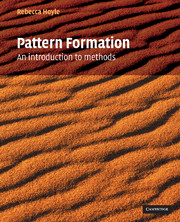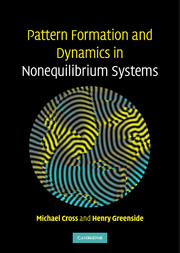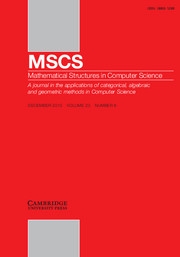Pattern Formation
From the stripes of a zebra and the spots on a leopard's back to the ripples on a sandy beach or desert dune, regular patterns arise everywhere in nature. The appearance and evolution of these phenomena has been a focus of recent research activity across several disciplines. This book provides an introduction to the range of mathematical theory and methods used to analyse and explain these often intricate and beautiful patterns. Bringing together several different approaches, from group theoretic methods to envelope equations and theory of patterns in large-aspect ratio-systems, the book also provides insight behind the selection of one pattern over another. Suitable as an upper-undergraduate textbook for mathematics students or as a fascinating, engaging, and fully illustrated resource for readers in physics and biology, Rebecca Hoyle's book, using a non-partisan approach, unifies a range of techniques used by active researchers in this growing field.
- Accessible description of the mathematical theory behind fascinating pattern formation in areas such as biology, physics and materials science
- Collects recent research for the first time in an upper level textbook
- Features a number of exercises - with solutions online - and worked examples
Reviews & endorsements
'Rebecca Hoyle's book is an invaluable graduate text for those who first enter the field of Pattern Formation. It has a remarkably lucid style and friendly exposition and very balanced level of detail through the book. An important strength is its rigorous mathematical approach which equips the reader with the underlying understanding of the mechanisms of pattern formation and enables one to confidently investigate novel problems … I find it remarkable that a book presenting a field that has recently grown to such proportions, feels so light and approachable when you first take it in your hands. This is, I think, a much needed encouragement for the beginner. The uncluttered chapter structure and also the nice publisher design play a role in this.' UK Nonlinear News
'The book is nicely illustrated with many examples and can be used as an upper-undergraduate textbook for mathematics students as well as a good introductory resource to pattern formation methods for researchers.' Zentralblatt MATH
' … provides an excellent first look at the traditional applications and the mathematical theory of pattern formation. Readers who work through a substantial part of the book will be well equipped to dive into the current research literature.' Journal of Fluid Mechanics
' … a very useful guide to this topic area, presented in a clear and logical fashion and written with style and panache.' Mathematics Today
Product details
March 2011Adobe eBook Reader
9780511839658
0 pages
0kg
130 b/w illus. 20 colour illus. 9 tables 50 exercises
This ISBN is for an eBook version which is distributed on our behalf by a third party.
Table of Contents
- 1. What are natural patterns?
- 2. A bit of bifurcation theory?
- 3. A bit of group theory?
- 4. Bifurcations with symmetry
- 5. Simple lattice patterns
- 6. Superlattices, hidden symmetries and other complications
- 7. Spatial modulation and envelope equations
- 8. Instabilities of stripes and travelling plane waves
- 9. More instabilities of patterns
- 10. Spirals, defects and spiral defect chaos
- 11. Large-aspect-ratio systems and the Cross-Newell equations.








